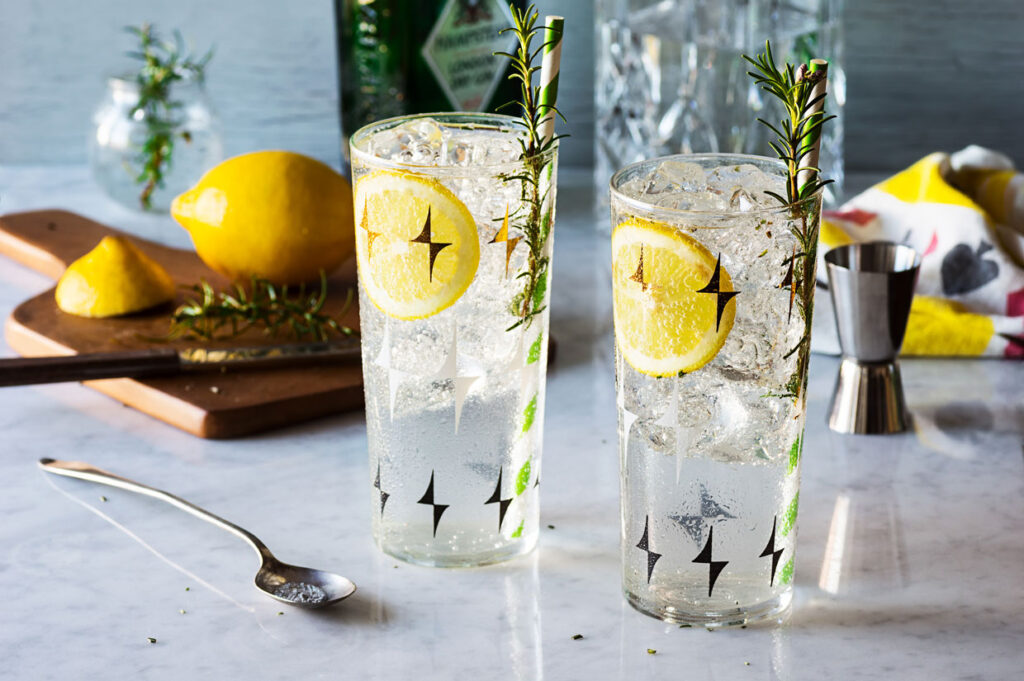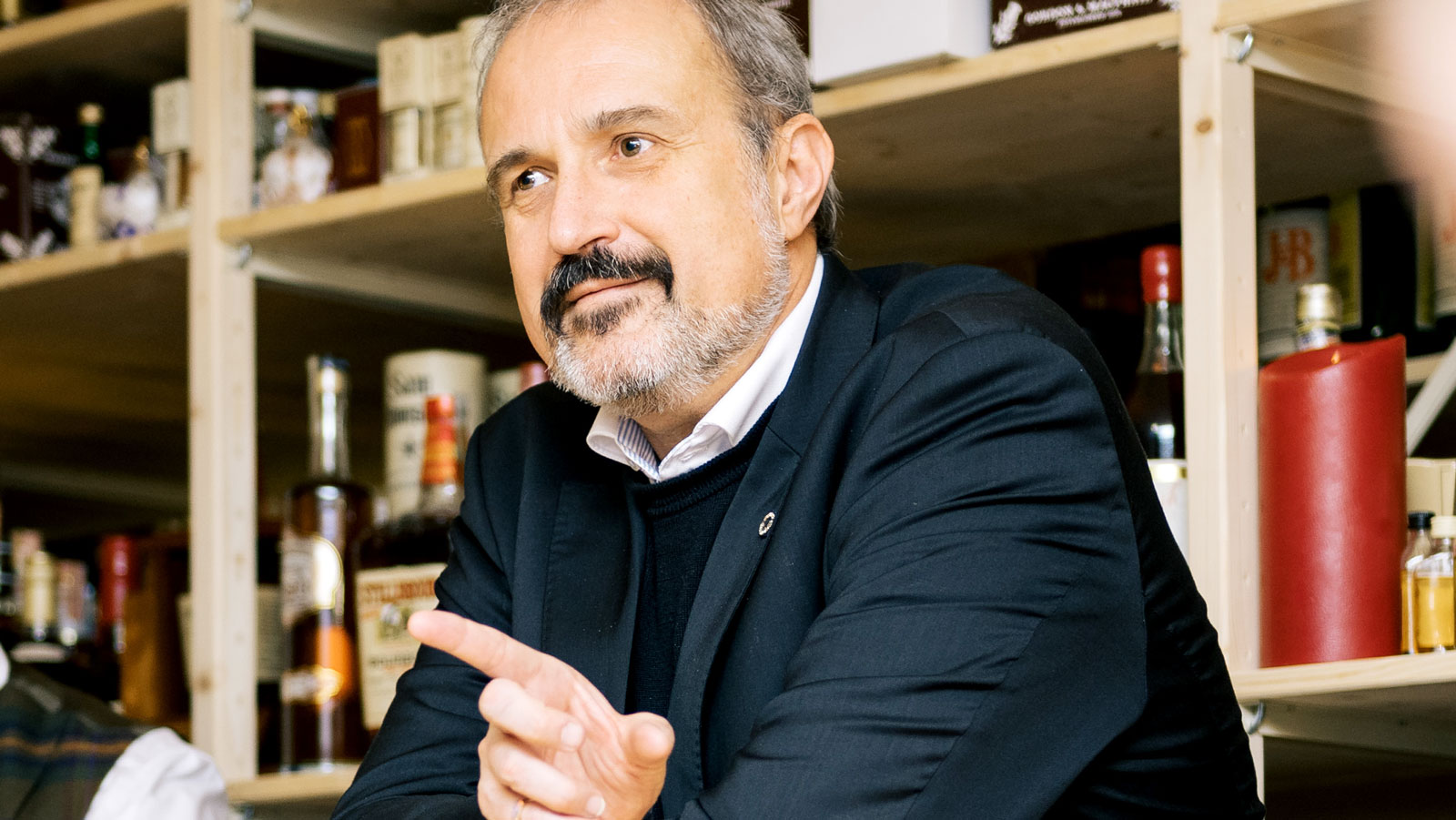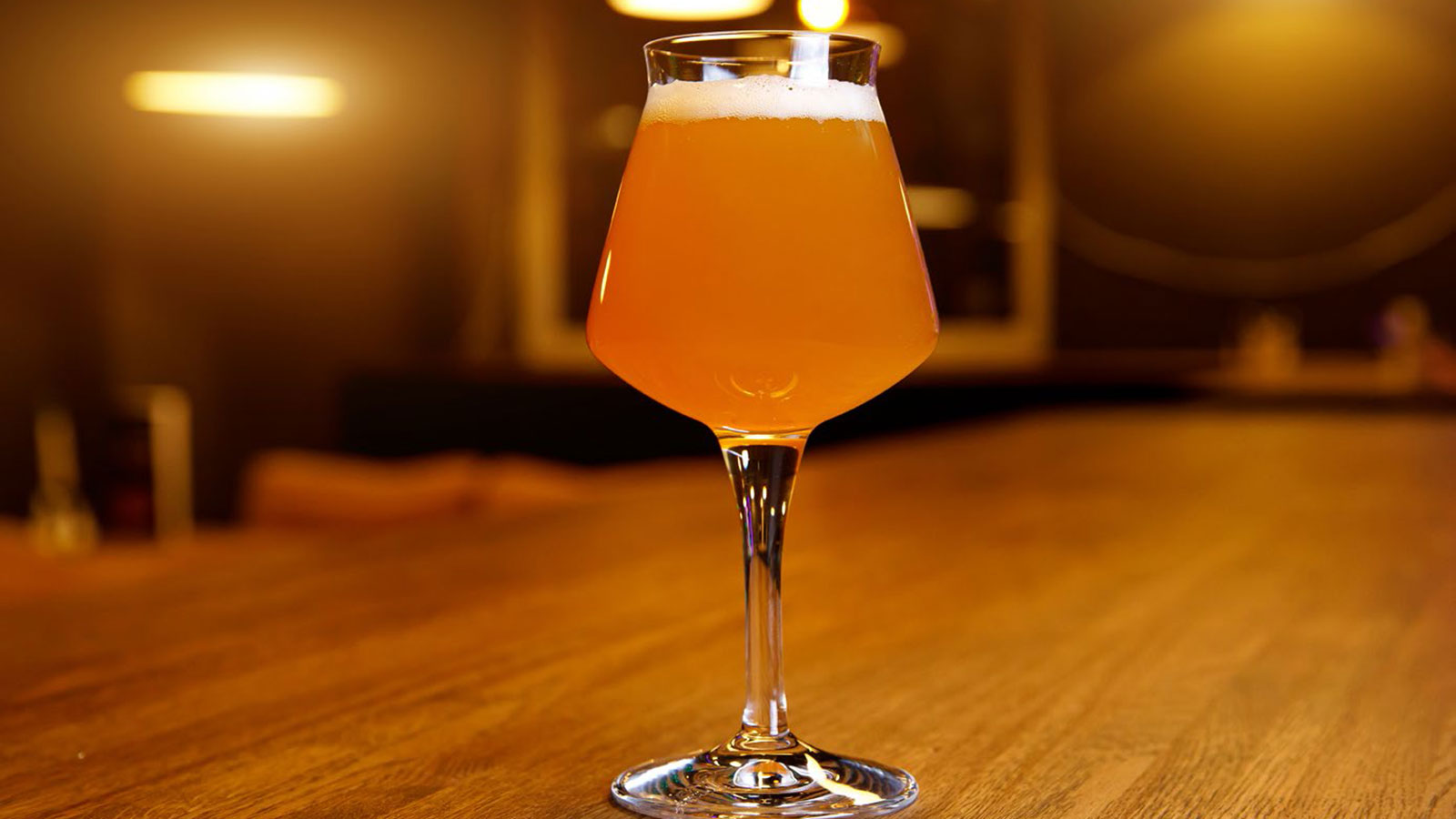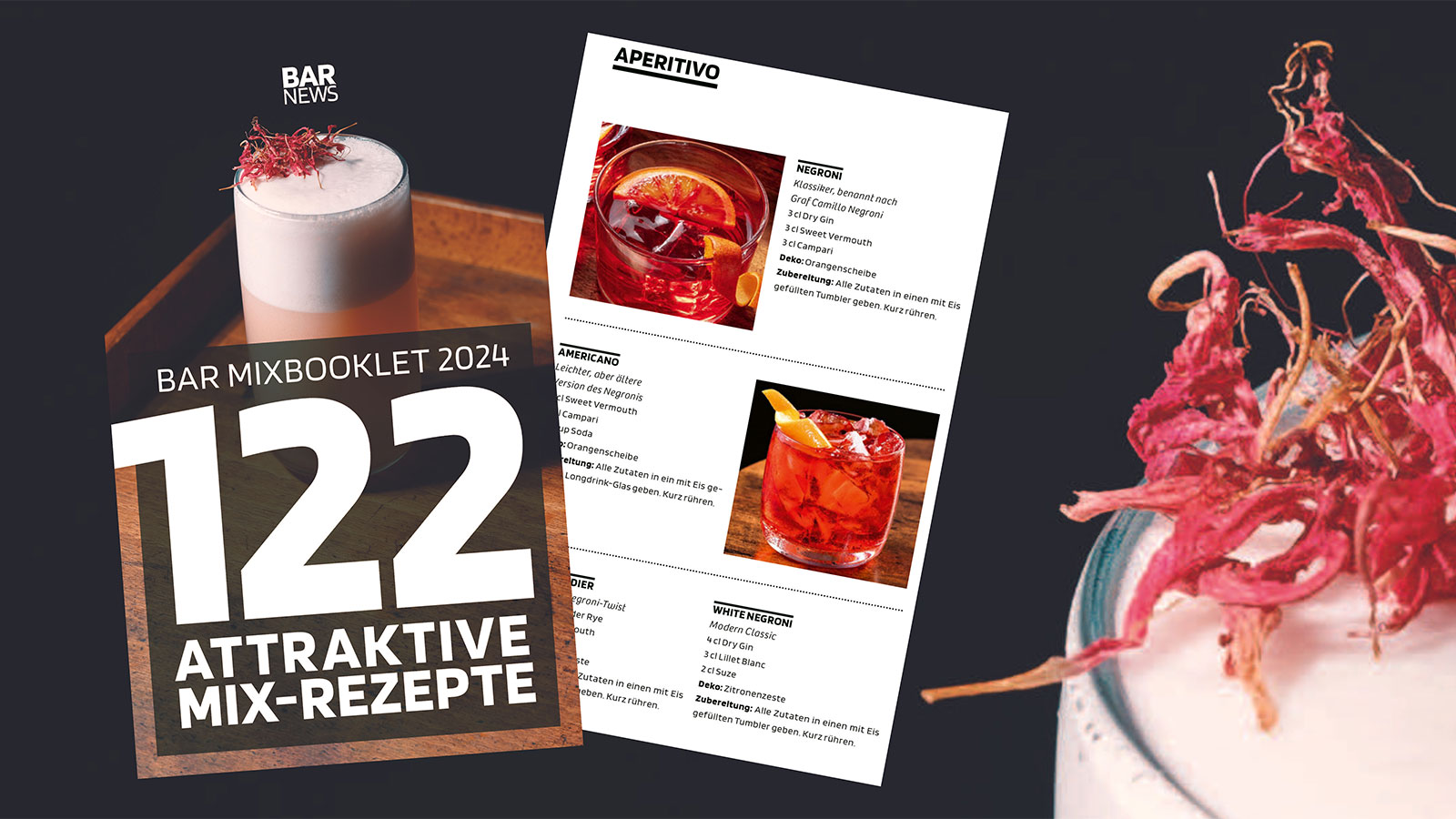Bars that now offer a selection of over 50 gins are not uncommon. In the last few years, we at the editorial office have received a sample of a new gin that wants to conquer the market almost every week. Most of them attractively presented, with a story and a beautiful design.
BAR NEWS: What was the status of gin in the bar scene 20 years ago? How was the category perceived?
Jürgen Deibel: For some years now, gin has been one of the hottest spirits by far. From a niche product with a dusty boring image, gin has developed into an omnipresent trend drink. Just 20 years ago, gin and tonic was the most important use of gin at bars around the world.
The gins used for this were on the classic gin side, i.e. mostly with a strong citrus and juniper emphasis. A few botanicals and traditional recipes, some dating back to the 18th or 19th century, determined the character of the gin. Of course, there were also gin cocktails, but these were less popular, perhaps with the exception of the Martini.
What was the decisive factor that made gin attractive again?
The development of gin received a major impulse with a "taboo break" in production. Whereas until the early 1990s a distinct juniper flavour was predominantly the hallmark of gin, many new doors were opened with the advent of gin with a different alcohol base (as an addition), the use of exotic and regional botanicals and diversification in production.
Social developments have also contributed to this, for example the move towards a more pronounced awareness of regionality and a simultaneous newfound desire for experimentation on the part of both young and established producers.
It should not be forgotten that gin is still one of the easiest and quickest alcoholic beverages to produce and can be sold shortly after distillation.
Jürgen Deibel

Since his studies in chemistry, Jürgen Deibel has acquired an incredibly broad knowledge of the world of spirits. As owner and managing director of Deibel Consultants, he advises spirits producers, conducts tastings and has been writing background reports for the trade magazine BAR NEWS for years.
How would you describe the gin trend in a global context?
Basically, regional ingredients play a big role on all continents today. The rarer (or more unknown) the ingredient, the better. Today, we find botanicals from all countries and regions of the world, plus wines (Europe) or sake (e.g. Japan) as the alcoholic base product (according to the European spirits regulation, however, 96% alcohol must form the basis!)
After all, a product today has to be rounded off with a good story and an innovative bottle design. It is not for nothing that colourful gins or pink gins are very popular today.
How do you see the gin trend in Europe?
Depending on the location, almost any plant can make it into a gin today, from the typical coastal plant or Nordic-influenced flavours (e.g. seaweed, cumin seeds, dill seeds, etc.) to alpine herbs and roots. Mediterranean plants and herbs as well as Asian spices or ingredients from the high plateaus of the Himalayas.
"It's important to remember that gin is still one of the easiest and quickest alcoholic drinks to make."
Jürgen Deibel
The important thing is the story that goes with it! In the end, it is only important that juniper is included and that the product complies with the regulations of the European Spirits Ordinance and the respective countries.
What trends can be seen today?
The gin character has changed again and again within the last few years. Whereas the traditional London Gin production method used to be the measure of all things, this has now shifted to distilled gins with additional flavouring.
The characteristics have also changed due to the increased control by authorities who have interpreted the spirits regulations somewhat "more narrowly" and wanted to see the character of juniper in the gin emphasised again. The return to the less-is-often-more principle with regard to the number of botanicals is also welcome.
I am sometimes critical of the "liquid ingredients" often used today, e.g. wines or distillates as concentrates. They can certainly be useful sometimes for rounding off, but they should not determine the gin in the end.
Where will gin be in five years?
That's a very difficult question. Gin has often been pronounced dead, but the dead live longest, as we all know. Of course, it is impossible to imagine the bar world without gin and, as a category, it will always be an important part of a bar. Drinking gin neat will probably not catch on (although there are lovers of this too).
Matured varieties will remain the exception. Regionality, linked to biodiversity and nature conservation, will remain interesting as long as the consumer identifies with it. This is still a growing segment, but here, too, there is a threat of a certain dullness and fatigue.
Regional brands will therefore continue to appear again and again, but will also disappear just as quickly when the effect of "novelty" fades and new variants appear on the market. As long as the market has this demand, we will continue to (find) new gin brands.
Small gin brands versus big corporate brands, what are the differences?
The large, established gin brands have of course recognised that the consumer wants diversification and limitation, coupled with innovation and regionality. Due to their market presence and penetration, they can also reach the consumer through the diversification of their core brand.
So for the time being, the "small producer" is left with regionality, coupled with transparency (distillery tours, tours to the sources of the botanicals, etc.) to draw attention to its products.
Regionally, a strong presence can be achieved, at least in the short term. However, it is important to be careful here, because not everyone is willing to pay any price for these attributes. You can quickly overreach yourself here...
What influence does the alcohol content have on the quality of a gin?
That depends very much on the composition and selection of the botanicals and the base alcohol (or other alcoholic additives) used. There are excellent gins with 37.5% by volume, but many prefer alcohol contents above 40% by volume today, or even Navy Strength gins with over 50% by volume.
Here it is important to understand which aromas of the botanicals are emphasised by which alcohol content. In the best case, a higher alcohol content is also accompanied by a stronger perception of aromas; in the worst case, it only makes the gin tangy!

How do you define premium gins?
The term "premium" has bothered me for a very long time. Today, it is used in an inflationary manner and almost every product is immediately given this attribute. That's why I reject it and view it very critically, especially when it is accompanied by pricing. A good product speaks for itself and does not need artificially hyped attributes!
What would you recommend to a bar thinking about launching its own gin?
Another gin? Anyone who wants to do this should first ask themselves whether it fits the bar at all and what they want to say with it?
Do I even have guests who value brands or are they more enthusiastic about my own cocktail creations? Do I want to create a monument for myself with my own gin (as so many already do today with their own gin brand)? How and where do I want to use it?
Only when you have answered these questions to your own satisfaction should you (ideally) turn to an expert to help you create the gin. Creating your own gin can be a useful addition to your bar's portfolio and reputation, but you shouldn't do it just because "everyone" is doing it.
What was your first experience with gin that you can remember?
My first experience with gin was several decades ago. Gin Tonic and Gin Fizz, later also Martini, were my favourite cocktails and long drinks back then. Some of them still are today (Martini) and supplemented by current drinks (e.g. Negroni). Since then, I have been following the development of gin.
What distinguishes a good gin for you?
A good balance and integration of the botanicals and the category-defining recognisability of juniper. The alcohol character must also fit in.
"As I am a fan of classic gins, classic gin botanicals are also standard for me."
Jürgen Deibel
Furthermore, I distinguish between gins in their application: some gins are excellent in cocktails/long drinks, but are undrinkable neat, while other gins are just the opposite. Ideally, a gin can do both, but unfortunately that is almost the exception today.
What is yourupper price limit for a good gin?
The price is individual. There is no upper or lower limit. Everyone has to draw their own line. It only annoys me when I realise that the price and the performance are too far apart. If the elaborate packaging is out of proportion to the liquid content, this should be clearly communicated!
But I do this directly with the manufacturer or owner of the brand, instead of an increasingly popular public display. In direct conversation, one can express oneself clearly and constructively. After all, everyone has their own taste preference.
However, if there are obvious production or conceptual errors, I will express and discuss them in conversation.
If you were to create your own gin, what other key botanicals (besides juniper) would you include?
Since I am a friend of classic gins, classic gin botanicals are also part of the standard equipment for me. The additions depend on who I'm creating the gin for or on what occasion the gin is to be used. Not everything that is possible or available regionally has to be used. Often less is more!
Which new gin convincedyou the mostlast year ?
From (the spirits expert's) point of view, there were some gins that actually excited me, but also some that didn't convince me at all. And this is independent of brand names, awards or advertising campaigns. But I will keep this expert opinion to myself, because every consumer and bartender should discover "his" gin for himself!
With this in mind, I wish you many good gins in your glass!
Thank you very much for the interview!




